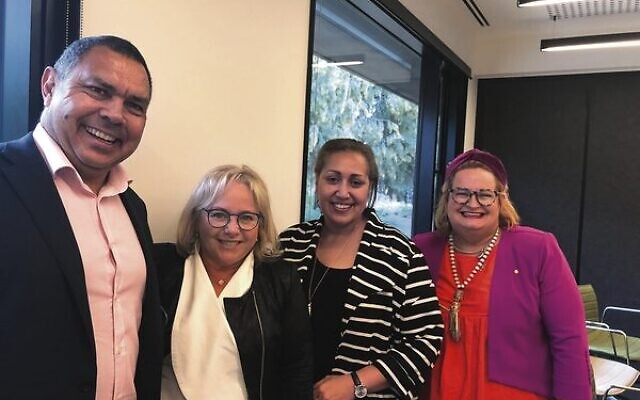Cultural artwork protected by blockchain
"We recruited four amazing students. One was from the art world, one from law, the third was a software developer, and a hardware developer," says Beverley Honig.

Honeylight Enterprises chair Beverley Honig was heading up a management education program on blockchain benefits and disadvantages when Shane Hamilton, the deputy secretary of Aboriginal Affairs NSW approached her with the concept of setting up a blockchain platform for First Nations people that includes their culture.
“We had a great business relationship in unrelated areas, so I said, absolutely love the whole concept. And then we realised how much we didn’t know,” Honig said with a laugh. They connected with the Monash Industry Team Initiative (MITI) where students collaborate and design innovative solutions to real issues in today’s business world.
“We recruited four amazing students. One was from the art world, one from law, the third was a software developer, and a hardware developer,” Honig said.
They built two platforms utilising the students’ skills and got the whole program and business concept to the implementation stage.
The result, First Nation Blockchain Pty Ltd became the best in the world at driving social gain with economic gain, through setting up a global blockchain hub for authentic Indigenous art, with unique access to artists and digital provenance, history and culture.
The result is an Aboriginal business with a patented blockchain to authenticate Indigenous art and artefacts with a unique tag/track/trace/trade platform for transparency to stamp out fakes and protect Indigenous cultural intellectual property. It protects the provenance of Indigenous artwork and culture.
The social impact of empowering Indigenous artists and protecting them from exploitation while directly benefiting financially from registered artwork is unique.
Blockchain technology is an advanced database mechanism that allows transparent information sharing within a business network. A blockchain database stores data in blocks that are linked together in a chain.
The Resale Royalties Act for Aboriginal art creates a right to a contingent income from an uncapped, flat rate of five per cent of the sale price on resales of artworks over $1000. Artworks covered are those created by the artist or under the artist’s supervision.
The blockchain database ensures the royalties are issued if and when an artwork is on-sold, no matter how many times.
Honig explained, “The information that we have is all about their culture and their story intertwined with the painting. So, it goes deeper. Plus, we’ve incorporated artificial intelligence to detect the physicalities of the artist’s unique brushstrokes. There is a lot of protection here.
“The main thing is that artists prosper. It’s not just artists, it’s any culture. We are working with other cultures now to use our platform to authenticate any process.”
The platform not only protects artists’ work, it delivers opportunities for art centre staff to develop professional services and support while Aboriginal and Torres Strait Islander peoples in remote communities can benefit from economic opportunities in the visual arts industry.

comments